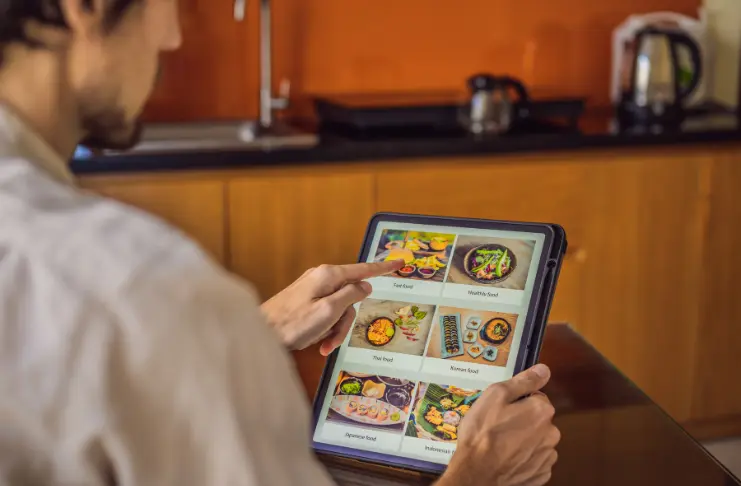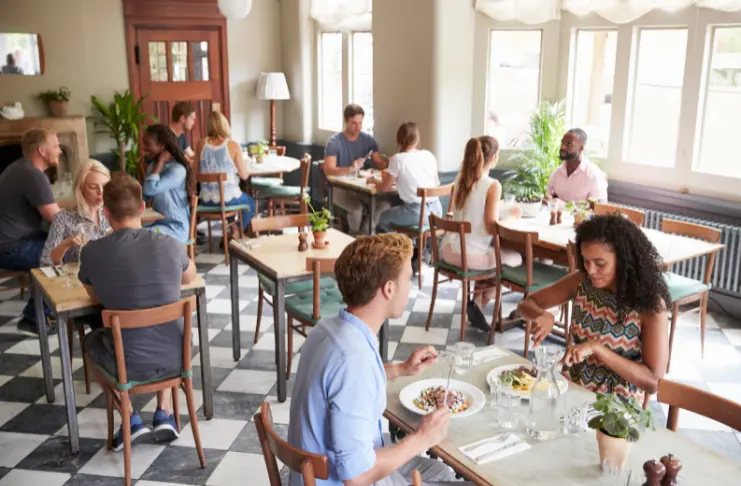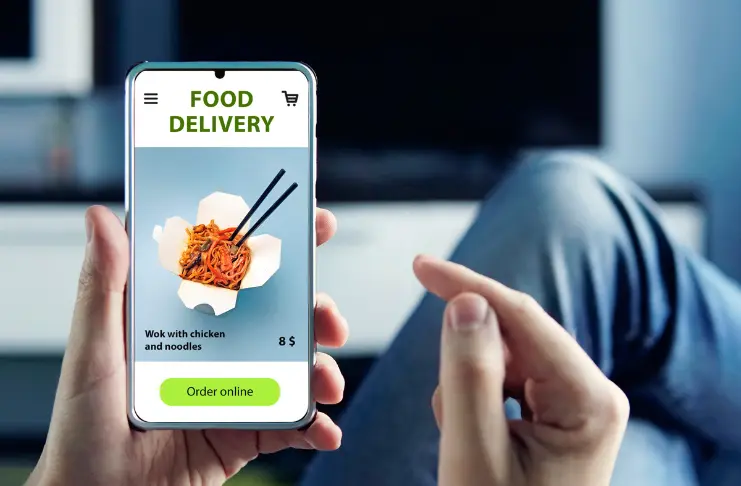
More than half of U.S. consumers now use restaurant apps regularly, but how they interact with these platforms depends heavily on who they are.
A Gen Z college student ordering takeout twice a week may not be looking for the same features as a Boomer booking a family dinner. Demographic differences, such as age, income, lifestyle, and digital habits, now shape what users expect from a restaurant app and whether they will keep using it at all.
For restaurants, these trends separate a generic app from a profitable one. Understanding demographic patterns helps them personalize offers, design more intuitive user interfaces, and ensure a smooth dining experience.
This blog explores the most important restaurant app demographic statistics and the key user segments shaping the food delivery app market for the restaurant industry.
Understanding Demographic Segmentation in Restaurant Apps
Demographic segmentation in marketing refers to dividing a broad consumer market into subgroups based on shared demographic characteristics. This approach allows restaurant operators to tailor their services, dining experiences, and marketing strategies to the specific consumer preferences and needs, increasing relevance and engagement.
Key Demographic Factors That Shape App Usage

1. Age
Age is a primary factor influencing how users interact with restaurant apps. Younger consumers, such as Gen Z and Millennials, typically adopt digital ordering features like online food delivery, mobile payments, QR ordering, and loyalty programs more rapidly. At the same time, older groups may prioritize ease of use and reliability.
2. Gender
Gender can impact food preferences, ordering patterns, and even the types of promotions that resonate most. Understanding gender-based trends helps restaurants and third-party delivery services craft more effective messaging and offers.
3. Income
Income levels affect customer spend, frequency of dining out, and the likelihood of using premium features or participating in loyalty programs. Higher-income users may seek convenience and premium experiences from food delivery platforms, while value-driven offers may appeal more to lower-income segments.
4. Education
Education often correlates with technology adoption and openness to trying new app features. More educated app users may be quicker to embrace innovations like in-app AI-driven recommendations or table reservation systems. At the same time, they often expect intuitive UX and app integrations with services like Apple Pay, calendar syncing, or Google Maps.
5. Family Status
Family size and status influence ordering volume, meal preferences, and the appeal of group deals or family-oriented promotions. Restaurant apps can offer easy group ordering, family meal bundle offers, or options to order alcohol delivery to serve this segment better.
Why Demographic Segmentation Matters for Restaurant App Strategies
Demographic segmentation is crucial for restaurant app strategies because it enables operators to deliver personalized experiences, optimize marketing spend, and increase customer loyalty. By understanding who their users are and what matters to them, restaurants can navigate the food delivery industry :
- Develop targeted promotions that resonate with specific age or income groups.
- Prioritize app features, such as loyalty programs, online payments, or table reservations, based on the preferences of key demographic segments.
- Enhance user experience by addressing the unique needs of different groups, from tech-savvy young adults to families seeking convenience.
- Drive higher engagement and retention by making users feel understood and valued.
Ultimately, demographic segmentation empowers restaurants to build stronger customer relationships and stay competitive with top food delivery app options in a rapidly evolving digital marketplace.
INDUSTRY INSIGHT
Millennials are most comfortable adopting technology when interacting with a full-service restaurant. This includes placing orders using a smartphone app (85%), paying using contactless or mobile options (82%), and using digital wallets (80%). This tech-first behavior reflects a generational expectation for seamless, self-directed experiences even in traditionally high-touch dining environments.
For restaurants, this means digital tools are no longer limited to quick-service models. Full-service operators must optimize their apps for mobile ordering, in-app payments, loyalty, and even real-time table service enhancements to meet the customer’s expectations.
10 Most Compelling Restaurant App Demographic Statistics
Convenient ordering, personalized experience, and hassle-free payments are just a few advantages that have made restaurant apps essential for users seeking good food.
So much so that over 34% of U.S. consumers report having used an app at least once to get restaurant food delivered, and about 21% do so for both restaurant delivery and takeout.
That level of engagement confirms that food delivery app usage is now a mainstream behavioral trend, and here’s who’s driving it-
1. 28.2% of U.S. Adults Use Food Delivery Apps At Least Weekly
According to YouGov, 28.2% of U.S. adults use food delivery or restaurant apps at least once per week, while another 44% use them occasionally, and just 24.5% have never tried one.
Clearly, restaurant apps have gone from occasional convenience to an everyday part of consumer behavior. However, the remaining quarter of non-users represents a significant growth opportunity.
These groups aren’t unreachable; they often need a clearer value proposition. Simple actions like offering a first-time discount, making the app easy to use even for less tech-savvy users, or adding QR codes to tables and packaging can help bridge the gap.
2. Gen Z and Millennials Dominate Usage, With Nearly 40% Ordering Weekly
In terms of app usage, Gen Z and Millennials are the most engaged, with nearly 4 in 10 using restaurant apps weekly. In contrast, only 21.5% of Gen X and 10% of Baby Boomers fall into that same high-frequency category.
For operators, this means younger consumers are more likely to respond to mobile-based promotions and app-exclusive offers. On the other hand, older demographics may still prefer traditional ordering or need additional encouragement to adopt online ordering.
3. Urban Users Are 2.6x More Likely to Use Restaurant Apps Than Rural Users
Urban residents lead restaurant mobile app adoption, with 39.2% using restaurant food delivery apps weekly, compared to just 15.3% in rural areas and 24.2% in suburbs. This is partly due to availability, as urban markets have more restaurants offering app integration, faster delivery networks, and higher smartphone penetration.

4. 64% of Millennials View Food Delivery as “Essential” to Their Lifestyle
In a 2023 EnterpriseAppsToday survey, 53% of all respondents, and a striking 64% of Millennials, reported that food delivery and takeout were “essential” to the way they live, highlighting how deeply ingrained delivery is for this group.
5. Younger Adults Are More Likely to Use Restaurant Apps and Websites
According to a survey by Appsrhino, 63% of people aged 18-29 have used a multi-restaurant delivery website or app in the past 90 days, while 51% of those aged 30- 44 have done the same. However, usage drops significantly among those aged 45-60, at just 29%.
6. Loyalty Programs Have Highest Enrollment Among Millennials and Gen Z
Loyalty features in restaurant apps are central to driving repeat orders among your most valuable demographics.
They are highly popular amongst millennials and GenZs, with average participation at 4 loyalty programs per user, while those 45 and older participate in only about 2 programs.
7. 18-44-Year-Olds Prefer Restaurants Listed on Delivery Apps
According to a 2024 study by Near, 48% of diners aged 18-44 said they are more likely to order food from restaurants that appear on takeout and delivery apps compared to those that don’t.
For Millennials and Gen Zers under 45, visibility on mobile delivery platforms like DoorDash, Uber Eats, or the availability of their own restaurant apps directly influences purchase decisions. Being absent from these ecosystems can mean losing relevance among a segment that prefers discovery, online food ordering, and reordering via apps.

8. Gen Z and Millennials Prefer Ordering and Paying Via Apps
According to the National Restaurant Association, 82% of Gen Z adults and 87% of Millennials would use an app to order, while 77% of Gen Z and 86% of Millennials would use it to pay. This compares to less than half of Boomers accepting mobile payments via app or self-service kiosk.
9. Younger Adults, High-Income Groups Engage More with Restaurant Loyalty Apps
On average, over 50% of loyalty program members at table-service restaurants engaged with it via mobile apps. For QSRs, 60% of members did so using a mobile app.
But more interestingly, college-educated customers, younger adults, and individuals earning more than $100,000 annually show higher engagement with loyalty apps at their local restaurants.
10. Table Reservations via Website and App are Growing
59% of Gen Z and 33% of Millennials said they occasionally reserve tables when dining out. While call-ins are a popular way of doing so, reservations through websites (48%) and apps (33%, up from 25%) are growing.
Conclusion
Restaurant app success in 2025 depends on more than just functionality—it hinges on knowing who’s using the app, how, and why. Each age group, income bracket, and user type interacts with a restaurant app differently, bringing their own preferences, habits, and expectations to the table. What Gen Z sees as essential, Gen X may see as optional, and others would ignore.
As restaurants continue to digitize, those who treat demographic behavior as an ongoing conversation will be best equipped to build apps that feel less like tech tools and more like thoughtful means to enhance the dining experience.
Frequently Asked Questions
Young GenZ and Millennials, between the ages of 25 and 34, use food delivery apps the most, with a high daily frequency. Their tech-savviness, fast-paced lifestyle, and comfort with mobile apps make them the top users.
Food delivery apps are not declining, but growth has slowed from the pandemic levels. Many consumers are choosing cheaper pickup options or cooking at home more often due to costly deliveries. That said, the overall market remains strong and continues to grow, especially among younger users.
DoorDash is currently the most popular food delivery service in the U.S., holding the largest share of the market. It controls over two-thirds of all meal delivery orders, far ahead of other platforms. Its dominance comes from wide restaurant partnerships, strong user experience, and broad national coverage.
More people use DoorDash than Uber Eats in the U.S. DoorDash has a 67% market share, while Uber Eats accounts for around 23%. This means nearly 7 out of 10 app-based food orders go through DoorDash, making it the clear leader among delivery services.








